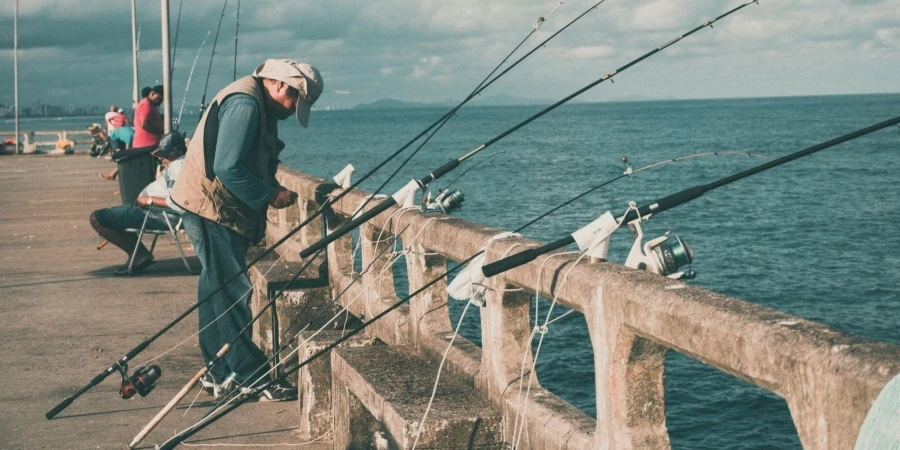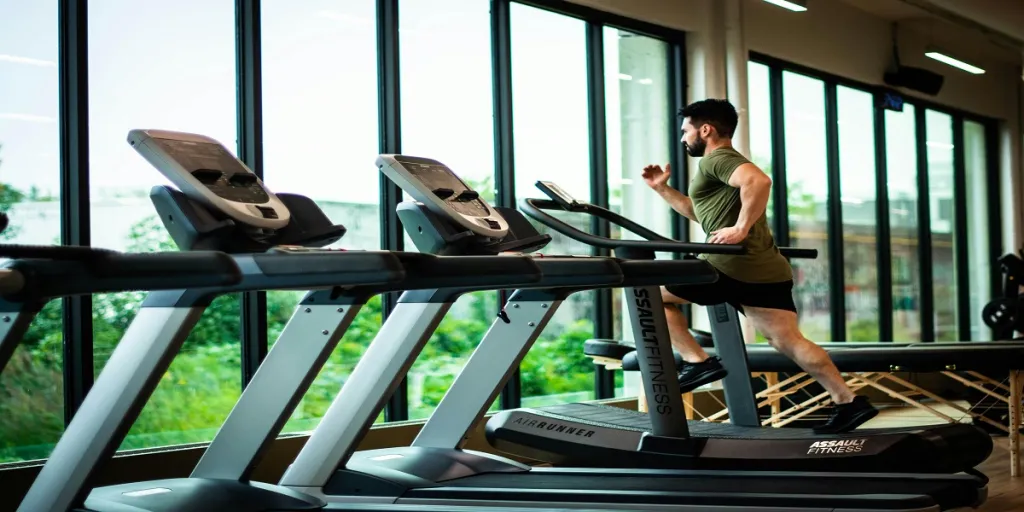Table of Contents
● Introduction
● Key Types of Fishing Rods and Their Uses
● Market Trends and Insights for Fishing Rods in 2025
● Key Considerations When Selecting Fishing Rods
● Top Fishing Rods for 2025: Best Models and Features
● Conclusion
Introduction
Selecting the right fishing rod is crucial for enhancing the overall fishing experience. Whether designed for freshwater or saltwater, a high-quality rod allows anglers to cast with precision, feel every nibble, and reel in larger catches with ease. The key is finding a rod that balances strength, sensitivity, and durability, tailored to specific fishing techniques and conditions. As fishing gear continues to evolve, there’s a growing demand for rods that combine advanced materials with lightweight designs. These innovations ensure comfort for extended use while providing the power and sensitivity needed for a successful outing. In 2025, fishing rods will increasingly play a pivotal role in meeting the needs of both seasoned anglers and beginners alike.
Key Types of Fishing Rods and Their Uses
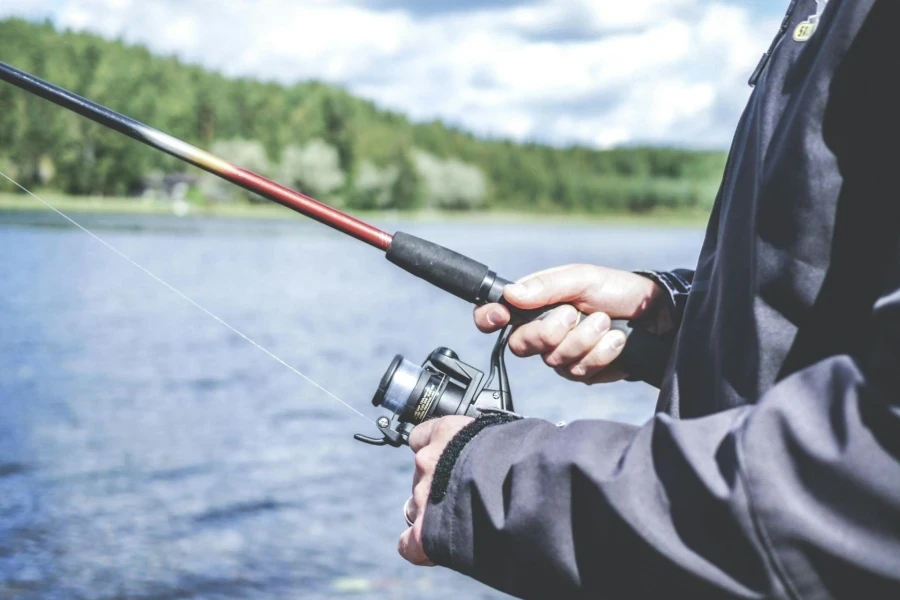
Spinning Rods: Versatility for All Anglers
Spinning rods are the most versatile option for anglers, offering a balance of ease of use and adaptability to various fishing conditions. Ideal for both beginners and experienced anglers, they excel at casting light to medium lures over long distances with accuracy. Spinning rods are commonly used for freshwater species, but they are also suitable for light saltwater fishing. Their design, featuring a flexible tip and lighter action, provides better control and sensitivity, making them ideal for precision casting in tight spaces, such as under docks or around submerged structures.
Baitcasting Rods: Precision for Experienced Fishers
Baitcasting rods are known for their precision and are favored by more experienced anglers. These rods are designed to handle heavier lures and lines, providing excellent sensitivity and control. They are ideal for targeting larger species like bass or pike, as their sturdy construction allows for better hook-setting and line management. However, baitcasting rods require a higher level of skill to master, as they can be prone to backlashes if not handled correctly. Their increased precision makes them a top choice for anglers looking to improve their casting accuracy and control.
Ultralight Rods: Perfect for Smaller Species and Beginners
Ultralight rods are designed for anglers seeking a more delicate, hands-on approach to fishing. These rods are lighter, shorter, and more sensitive, making them ideal for targeting smaller fish species such as trout or panfish. Their sensitivity allows anglers to feel even the slightest bite, providing a more engaging and exciting experience. Due to their lightweight construction, ultralight rods are particularly well-suited for beginners, as they make it easier to learn the basics of casting and fish handling. Despite their limitations with larger fish, they offer a rewarding challenge when used in smaller waters.
Combos: Convenience and Cost-Effectiveness
Fishing rod and reel combos are a convenient option for anglers who prefer a ready-to-use, balanced setup. These combos provide an easy, cost-effective solution for both novice and experienced anglers, as they eliminate the need to match a rod with a compatible reel. By purchasing a combo, anglers save time and effort while ensuring that the rod and reel work seamlessly together. Combos are available in various sizes and strengths, making them suitable for all types of fishing, from ultralight freshwater fishing to heavier saltwater applications. Additionally, combos tend to be more affordable than purchasing the components separately.
Market Trends and Insights for Fishing Rods in 2025
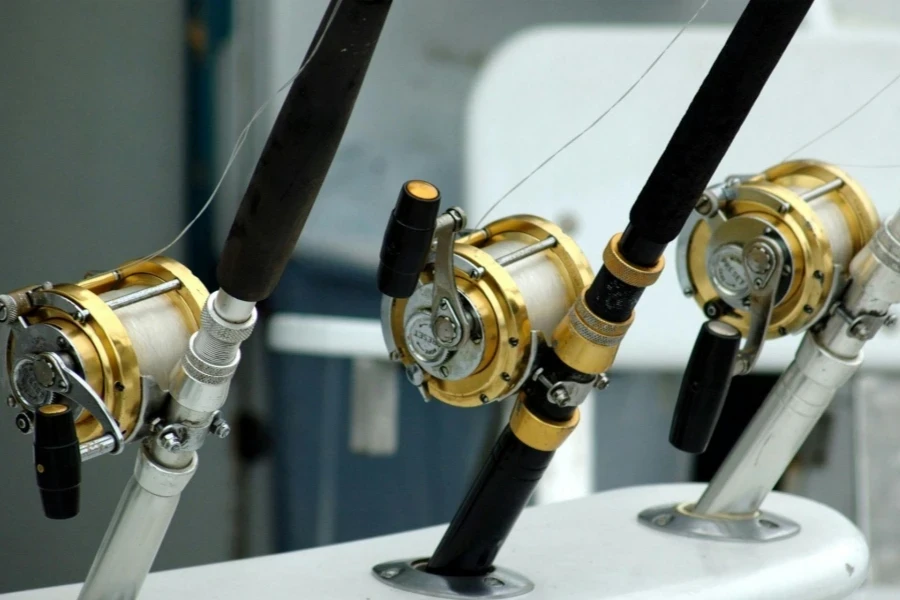
The global fishing rod market was valued at approximately US$ 3.85 billion in 2023 and is projected to grow at a compound annual growth rate (CAGR) of 5.62%, reaching US$ 5.87 billion by 2031. Key factors driving this growth include increased demand for recreational fishing, advancements in fishing rod technology, and the growing popularity of outdoor activities. North America and Europe are expected to remain dominant, with the U.S. contributing significantly to the market share. Meanwhile, the Asia-Pacific region, particularly countries like Japan, China, and India, is witnessing rapid growth due to expanding fishing populations and the rise of recreational fishing, according to GlobeNewswire.
Increasing Popularity of Durable, High-Quality Rods
In 2025, the demand for fishing rods made from durable, high-quality materials will continue to rise. This trend is largely driven by anglers looking for long-lasting equipment that can withstand harsh conditions. Composite rods made with advanced carbon fibers and graphite materials have become increasingly popular, offering superior strength while remaining lightweight. Manufacturers are focusing on improving the structural integrity of rods, ensuring that they are resistant to wear and tear, even under extreme pressure. According to industry reports, rods made from these high-strength materials are expected to see a significant growth in market share, with carbon fiber and fiberglass composites being favored for their durability in saltwater fishing.
Moreover, anglers are no longer just looking for durability in terms of longevity—they want rods that can withstand the physical stresses of fishing in tough conditions. The increased use of multi-layered construction, incorporating new hybrid materials, has made rods more shock-absorbent. For instance, high-performance rods designed for both freshwater and saltwater fishing are incorporating advanced resins and coatings to prevent corrosion and damage from exposure to saltwater. By 2025, these enhancements will become a standard feature in rods, particularly in the high-end market. Data from fishing gear manufacturers suggest that this push for durable rods will continue to be one of the defining trends for the next five years.
The Shift Towards Lightweight and Sensitive Materials
Another major trend in the fishing rod market is the growing preference for lighter, more sensitive materials that offer increased performance without sacrificing durability. In 2025, the demand for lightweight rods will intensify as manufacturers focus on reducing weight while enhancing rod sensitivity for better feel and control. Graphite and high-modulus carbon fiber are at the forefront of this shift. These materials offer anglers the ability to detect subtle changes in the water, making them ideal for precision fishing. Lighter rods reduce hand fatigue during long fishing sessions, providing a more comfortable experience, especially for competitive anglers or those who fish for extended hours.
Alongside this demand for lightweight materials, sensitivity is becoming just as important in 2025. Rods that provide better tactile feedback allow anglers to feel even the slightest nibble, giving them more control over their techniques and improving their success rates. The integration of advanced fibers like nano-resins and multi-material designs will boost sensitivity while keeping rods light and responsive. In fact, market research has shown that sensitivity is now one of the most sought-after features in rods, especially among professional and tournament-level anglers. As these materials become more widely used, it is expected that the combination of lightness and sensitivity will dominate the market for the next generation of fishing rods, pushing other manufacturers to adopt similar technology.
Key Considerations When Selecting Fishing Rods
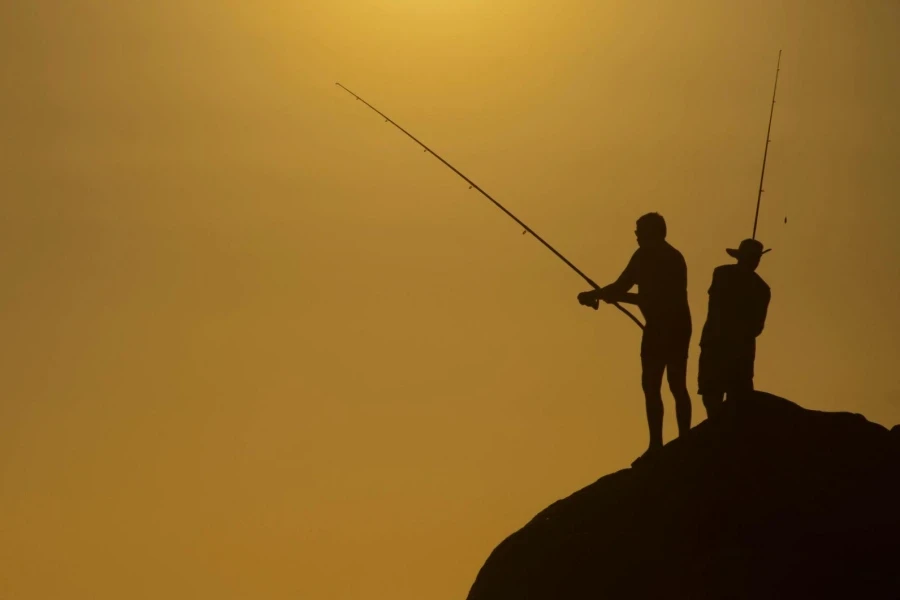
Understanding the Rod’s Material and Construction
The material of a fishing rod directly influences its weight, strength, and sensitivity. Carbon fiber rods are lightweight and highly sensitive, making them suitable for finesse fishing where subtle bites are common. However, they can be brittle and may not hold up under heavy pressure. Fiberglass rods are more durable, flexible, and shock-resistant, making them ideal for rough environments and larger fish species. The rod’s construction, including its action and power, determines its ability to bend under pressure and withstand different fishing scenarios. The combination of these factors ensures a rod performs optimally for specific fishing styles and environments.
Fishing Environment: Freshwater vs. Saltwater Needs
The type of environment in which a rod will be used plays a crucial role in its selection. Freshwater rods are typically lighter, more flexible, and sensitive, as they are designed for smaller fish in calmer waters. In contrast, saltwater rods need to be stronger and more corrosion-resistant to handle the harsher conditions, including saltwater exposure. Saltwater rods are constructed with robust materials to withstand the pressure of larger fish and the corrosive effects of salt, ensuring durability in challenging conditions.
Sensitivity and Strength for Different Species
Sensitivity and strength are key factors when choosing a fishing rod based on the species being targeted. A sensitive rod helps detect small bites, which is crucial when fishing for species like trout or panfish that take small, subtle nibbles. However, for larger fish, such as pike or marlin, a rod with greater strength is needed to handle the power and size of the fish. Finding the right balance between sensitivity and strength ensures that the rod can effectively detect bites while maintaining the durability needed for larger, more aggressive species.
Top Fishing Rods for 2025: Best Models and Features

Versatile Spinning Rods: Great for Various Fishing Styles
Spinning rods are highly versatile, making them a favorite among anglers who require a flexible tool for a range of fishing styles. They are ideal for both light freshwater fishing and more demanding saltwater applications, offering excellent sensitivity and balance. With advancements in materials such as carbon fiber and composite blends, modern spinning rods are lightweight yet durable, enabling precise casts over long distances. Their adaptability ensures that anglers can target a variety of species, from small freshwater fish to larger game fish, making them an essential part of any tackle box.
Precision Baitcasting Rods: Ideal for Targeted Fishing
Baitcasting rods are designed for anglers who need precision and control, excelling in situations that require targeting specific spots, such as casting near structures like docks or rocks. These rods are perfect for fishing with heavier lures or baits, allowing for greater power and accuracy in each cast. Baitcasting rods offer minimal line resistance, which improves casting distance and handling of larger fish, though they require skill to master. Despite their learning curve, they are invaluable for anglers focused on precision and targeting larger species.
Ultralight Rods: Designed for Smaller Fish and Delicate Catches
Ultralight rods are perfect for anglers who prefer finesse and sensitivity, particularly when targeting smaller fish species or using delicate fishing techniques like fly fishing. Designed for lighter lines and more subtle bites, these rods offer an intimate fishing experience, where every nibble is felt. Constructed from high-modulus graphite or carbon fiber, ultralight rods are both sensitive and strong, providing the ideal tool for catching species like trout or panfish. Their design ensures greater sensitivity, making them a go-to for anglers who prioritize precision and light tackle fishing.
Strong and Durable Rods: Built for Longevity and Performance
Strong and durable rods are essential for anglers targeting large, powerful species or fishing in harsh environments like saltwater. Made from materials such as graphite, fiberglass, or hybrid blends, these rods offer both strength and resilience, ensuring they can withstand frequent use and tough conditions. They are built to handle heavy loads and powerful fish, with reinforced guides and reel seats for long-term reliability. Strong rods provide the performance needed for big-game fishing while ensuring durability and comfort, making them an indispensable choice for serious anglers.
Conclusion

Selecting the right fishing rods in 2025 requires a keen understanding of advancements in materials, market trends, and the diverse needs of anglers. As the demand for specialized, durable, and eco-friendly fishing rods grows, businesses can benefit from offering a range of rods that cater to different fishing environments and target species. With consumer interest increasingly centered on lightweight, sensitive, and robust designs, retailers prepared to adapt their product offerings to these trends will be well-positioned to meet market demand and ensure continued growth in fishing gear sales.
